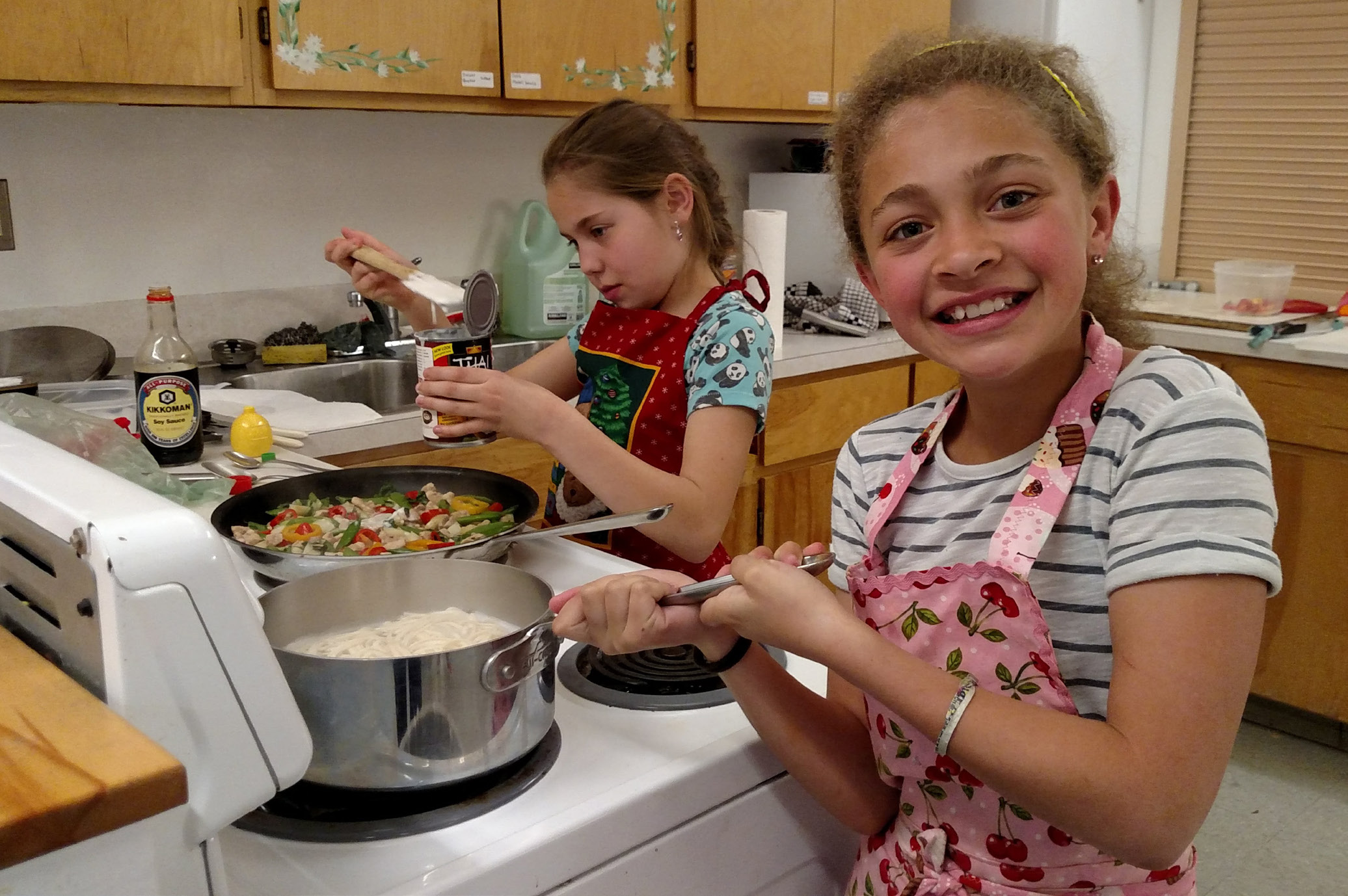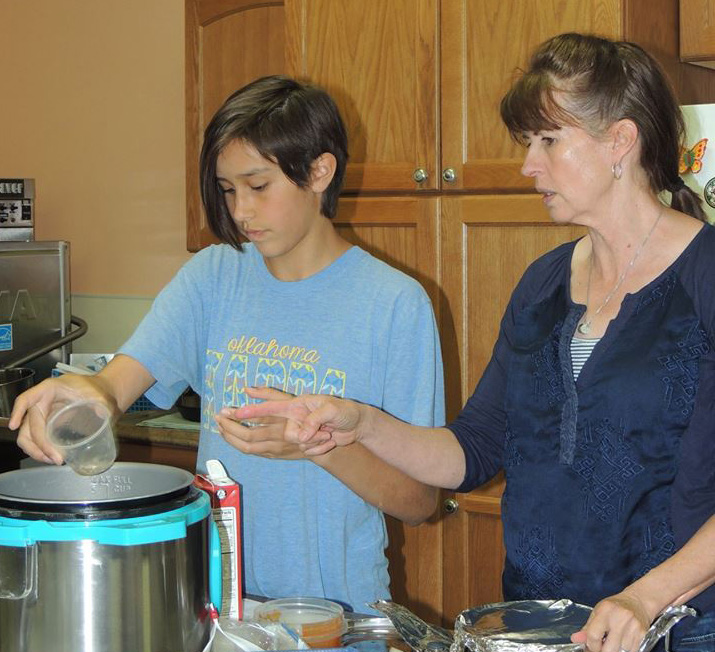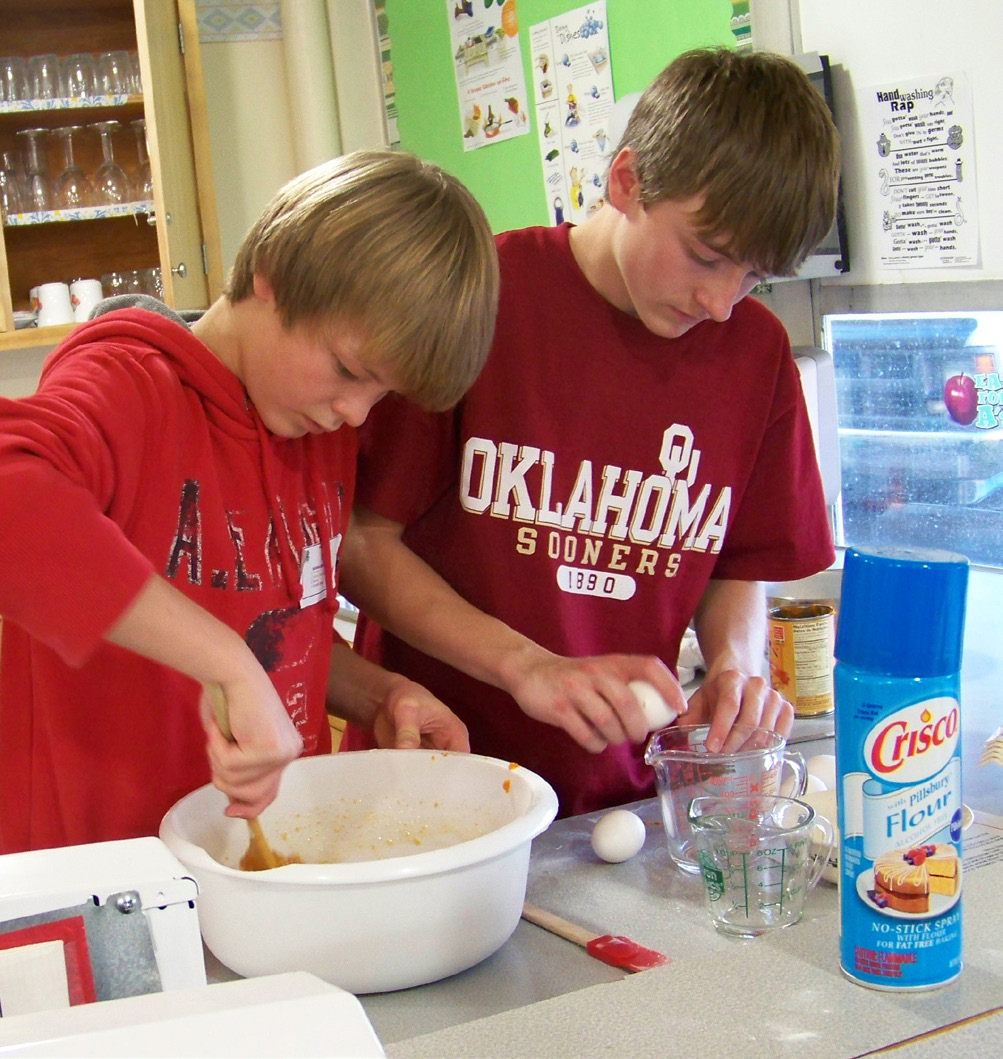Winter in the Kitchen with Kids

Photo: Katelyn Andersen, MSU Extension
The colder months can make for long days of finding ways to creatively engage youth. Engaging kids throughout the family food growing, buying, and eating process can provide many benefits. This can be the first step for your child in building healthy life-long habits and positive relationships with food. Positive interactions with adults and siblings around food can improve relationships as well as encourage healthy habits for all family members.
Sometimes, this can feel messy or overwhelming, but you can start where your family feels comfortable. According to research by E. Satter and team, caregivers provide the ‘what, when, and where’ food is engaged with and eaten. Kids are learning to decide how much and whether they will engage with the food and eat. Involvement with food decisions supports the development of skills for mindfully consuming nutrients that help their bodies and minds grow.
WHAT ABOUT FOOD
Over time, work to balance your plate with vegetables, fruits, whole grains, lean protein and dairy in alignment with USDA’s MyPlate (myplate.gov). Child development experts suggest having at least one familiar and liked food with each new (or continued) food. It can take as many as 7–10 food exposures before a child will try a new food. Consider having a “safe” food available next to a “new” food to reduce exposure anxiety. Engage kids in growing or preparing new foods in different ways to do a family taste test. Have your kids help in developing a menu plan by having them choose the fruit or vegetable at the store.

Photo: Kari Lewis, MSU Extension
Avoid using food as a reward or restricting foods. While often well-meaning, family
food experts have found that food rewards or restricting access to available foods
can make some foods more desirable while others become more undesirable. Instead of
the clean plate club or “finish your broccoli before you can have dessert,” treat
all foods as being valuable to our bodies. Sometimes this may mean having dessert
first or not eating any broccoli to avoid additional power struggles over food in
favor of trusting the child to know what their body needs. Sometimes this means setting
boundaries that the food on the table is what is available to eat if they are hungry.
If not, they can try again at the next designated food time. As the caregiver, you
can still decide what is available for a meal and practice the strategies below to
promote positive long-term
food relationships.
LESS TALK ABOUT FOOD, MORE ACTION
Try a hands-on activity to create a tasty and nutrient-rich dessert. Research suggests that making small, successful changes is more likely to lead to long-term, sustainable food choices. Instead of cutting sweets entirely, try making mini versions for a longer-lasting and mindful treat. Have a child help mix a batch of pumpkin, oatmeal, and chocolate chip cookies or cinnamon, raisin, and whole wheat muffins to add a fruit or vegetable to put a comforting treat on their plate.

Photo: Alice Burchak, MSU Extension
WHEN TALKING ABOUT FOOD, MAKE IT MEANINGFUL
Consider mindful sharing opportunities to build meaningful relationships with each other and the foods you eat. Asking “How was your day?” and getting “Good” as a response can be exhausting and uninformative for all. Similarly, research suggests labeling food as “good” or “bad” isn’t particularly helpful in growing healthy, mindful relationships with food long-term. Instead, highlight a positive or funny memory you have about the food on the table that evening. This could be reminiscing about your childhood memories of that food, highlighting something you are thankful for in that food from the farmer to the pollinator, to the grocery checkout attendant, and to the compost bin in the backyard. You may also share the senses you experience with the food if it has an enjoyable aroma or texture or is visually appealing.
Remember that taste buds change throughout life, so there is no time like the present to try or decide to like a new food. All family members can work toward a more balanced diet. By avoiding pressure, keeping portions small, and encouraging exploration, all family members can support one another toward healthy life-long habits. For more age-and-stage-appropriate ideas and resources, check out the new MSU Extension MontGuide “Engaging Kids in the Kitchen.”
Brianna Routh, PhD, RDN, is an MSU Extension Food and Family Specialist.
